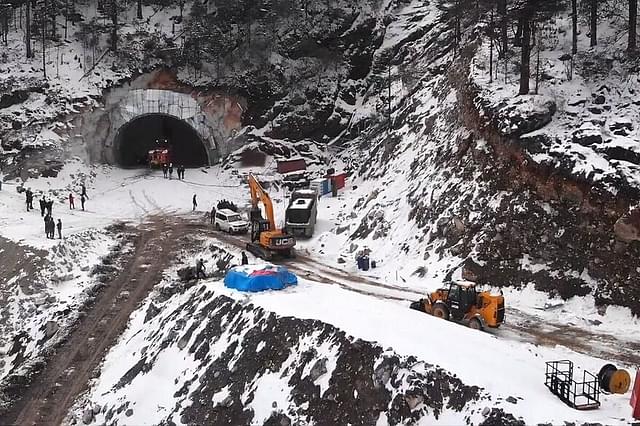To strengthen nationwide security and to offer all weather condition connection to Arunachal Pradesh, the Border Roads Organisation (BRO) accomplished a significant advancement after it performed a blast of the primary tube of Sela Tunnel. It will be a huge boon for the population of Tawang. Along with strengthening national security, this tunnel will work to strengthen the socio-economic condition of the citizens by bringing a big change in the transport facility of the local population. This Sela Tunnel will prove to be the lifeline for Tawang and the entire Arunachal Pradesh in the times to come,” Defence Minister Rajnath Singh said, presiding over the event via video-conference. The minister Rajnath Singh at the end of his address likewise flagged off the ‘India @75 Motorcycle Expedition’ which has actually been arranged by BRO as a homage to the soldiers who compromised their lives for the nation. This bike exploration becomes part of ‘Azadi Ka Amrit Mahotsav’ and has around 75 riders from BRO, and likewise consists of Indian Army and General Reserve Engineer Force workers. The range to be covered in this is around 20,000 kms over 75 days.
The project progress
Arunachal Pradesh Governor Brig (Retd) Dr B D Mishra in September has lauded the technical expertise of Border Roads Organisation (BRO) while inspecting the ongoing work of Sela Tunnel project. Sela is located at an altitude of 13,800ft on the 317km long Balipara-Chariduar-Tawang (BCT) road which connects West Kameng, East Kameng and Tawang districts of Arunachal Pradesh to the rest of the country. After completion, the project would provide all-weather connectivity to Tawang and forward areas. The 1.5 km tunnel will become one of the longest bi-lane road tunnels in the world, which is at an altitude above 13,800 feet. The latest New Austrian Tunneling Method has been used to construct this tunnel which is below the snow line and will help in all weather travelling and there will be no challenge of snow clearance. Moving across the Sela Pass will become faster and smoother.

About Sela Pass
The Sela Pass is a high-altitude mountain pass located on the border between the Tawang and West Kameng districts in the Indian state of Arunachal Pradesh. It has an elevation of 4170 m (13,700 ft) and connects the Indian Buddhist town of Tawang to Dirang and Guwahati. The pass carries the National Highway 13 (previously NH 229), connecting Tawang with the rest of India. The pass supports scarce amounts of vegetation and is usually snow-covered to some extent throughout the year. Sela Lake, near the summit of the pass, is one of approximately 101 lakes in the area that are sacred in Tibetan Buddhism. In 2019, Prime Minister Narendra Modi laid the foundation stone of the Sela Tunnel project, and today’s blast of the main tube marks the end of its excavation. According to the Ministry of Defence, so far the work on the 980-metre long second tunnel of the project has almost crossed the 700-metre mark.
6 important things to know about the Sela Tunnel Project
- The Sela Pass is located between the Tawang and West Kameng districts of Arunachal Pradesh and is considered crucial from a strategic perspective.
- Being constructed by the Border Roads Organisation (BRO), Sela Tunnel will be the longest bi-lane road tunnel in the world at an altitude above 13,000 feet upon completion.
- It’s being constructed using the latest New Austrian Tunnelling Method (NATM) and is considerably below the snow line, which makes it accessible during all weather.
- The Sela Tunnel is expected to cut down the distance to the China border through Tawang by 10 km, it would also cut down by at least an hour the travel time between the Army’s 4 Corps headquarters at Tezpur in Assam and Tawang.
- Despite COVID-19 restrictions and adverse weather conditions, the project has been ahead of schedule. It’s expected to be over by June-August 2022.
- The tunnel will add to the tourist potential of Tawang and attract more tourists, making it a more popular destination in the NorthEast region.
The Sela Tunnel project is estimated to cost Rs 687 crore and covers a total distance of 12.04 kilometres and consists of two tunnels of 1790 metres and 475 metres each. It has reached its final stages of construction. The tunnel, constructed by the Border Roads Organisation (BRO) under Project Vartak, holds strategic importance as it will enhance the Indian military’s capabilities in combating the threat of China’s Western Theater Command, opposite India’s eastern sector of Line of Actual Control.



